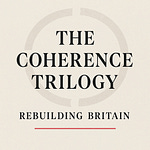This week’s Deep Dive unpacks those scary headlines about Britain’s “record debt interest” and explains what’s really going on beneath the jargon.
The leaky bucket metaphor illustrates how taxes fill the bucket, services like schools and hospitals depend on the water, but four big holes drain money away before it can be used:
Foreign bondholders – about a third of gilts are held overseas, so interest flows out of the UK.
Bank reserves from QE – the Bank of England pays billions in interest to commercial banks on electronic deposits created during quantitative easing.
Index-linked gilts – tied to RPI inflation, they make the bill balloon when prices spike, sometimes handing windfalls to hedge funds and overseas investors.
Sterling as a reserve asset – global demand for gilts is a vote of confidence, but it means the UK pays a “credibility rent” to keep foreign investors interested.
They stress that this isn’t about new spending; it’s redistribution. Roughly £111 billion in 2025–26, more than education, almost twice the amount spent on defence, and two-thirds of the NHS budget, goes on interest. That’s one pound in every twelve of all spending, and the bill has doubled in just six years.
Finally, the episode explores practical fixes, including tiering interest on reserves, smarter debt issuance (with less inflation linkage and longer maturities), boosting NS&I to tap household savings, making gilt auctions more predictable, and building a BoE–Treasury buffer for QE losses.
The takeaway: Britain’s debt system isn’t just an accounting exercise. It’s plumbing. Unless the leaks are reduced, taxpayers will continue to foot a massive bill for flows that don’t purchase new services.










